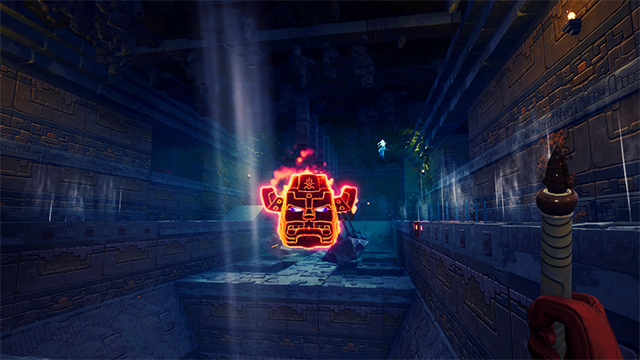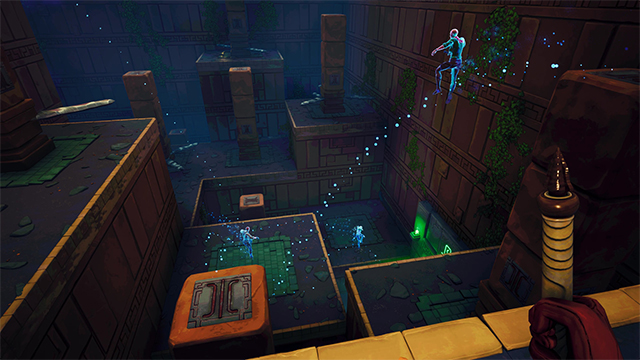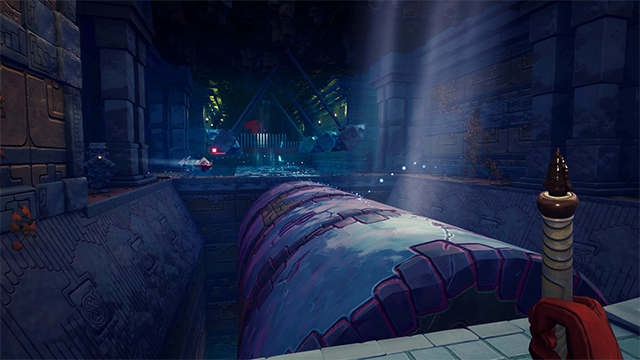Even though roguelikes and roguelites have taken over in the past few years, Spelunky remains one of the most prevalent examples. And that’s not just because it’s one of the earlier entries as it’s also one of the best ones, too. Despite the odd name, Phantom Abyss feels a lot like a 3D Spelunky not only for its roguelike nature, but also its tone. It’s a treasure-hunting roguelite that borrows a bit of Spelunky’s charm while also mixing in some influences from the Indiana Jones movies as well as Nickelodeon’s (well, formerly of Nickelodeon) Legends of the Hidden Temple. And its mix of three different takes on the spelunking genre just might be worth treasuring.
The roguelite nature comes from its premise. Temples are procedurally generated and only a single person will ever complete each one. Once the final treasure at the end has been claimed, that lucky and skilled adventurer will have exclusive bragging rights over that particular treasure. This very nature taps into the allure of treasure-hunting media: the rush of grabbing the one item no one else has been able to grab thus far. Nathan Drake didn’t hunt down the Phurba dagger because it was one of 567.
There are also a few typical roguelite staples. Players can unlock and buy different whips with buffs and debuffs, which is slightly reminiscent of the parasites in Returnal. Mid-run perks can be purchased from coins gathered during that run. Levels are packed with traps and players are incredibly fragile. Dying is a way of life.
Those established tropes of the genre work here and further add to the unpredictability that these types of need to thrive on. If a game sells itself on being different every time, then it needs to make each of those times feel different. Phantom Abyss has some variation, but it’s still in its early stages. Developer Team WIBY said it wants the game in Early Access for a year so it can add more “rooms, traps, whips, zones, and additional gameplay features” before it actually releases.

A year is a long time but there is a solid core here. It can just use a lot more of what it already has. There’s a prevalent Nemesis-like mask that can stalk players, which is an excellent idea that should be further expanded upon. Buying buffs at shrines is also a good system to have, but more ways like this to change each run would add even more variety.
Rooms are filled with different traps, but some of those rooms can repeat or be a little dull since whole groups of spike pits or collapsing floors can simply be avoided by simply walking around them. There’s even a maze that can be entirely bypassed by grappling up on the top. Clever solutions are welcome, but this just feels like an oversight that cheapens the experience by making gameplay too easy to skip. The game is on the right track; it just needs to address these shortcomings that should be somewhat solved by expanding upon its existing toolset.

The gameplay itself can also use some tweaking but is still also fundamentally solid. Players can slide, jump, and use their whip to stop threats or grapple. It’s a simple move set that gets the job done and is relatively fluid and forgiving.
Grappling is the star here and is the center of the game’s more exhilarating and anger-inducing moments. Whipping to ledges in a mad dash to narrowly avoid spikes is a rush and adds some much-needed mechanical complexity to the experience. But aiming it consistently is a problem for a few reasons. Grappling takes two button presses when it should only take one. The reticule often lies, too, as sometimes the green grapple effect only shows some of the time, making the whip’s range more confusing than it should be. Having to aim it while also not having a reliable crosshair both work together to hamper the game’s best mechanic and make deaths more frustrating.

The Legends of the Hidden Temple comparisons are not only apt because of its Central American or Mesoamerican backdrop, but also its multiplayer elements. Each run is filled with blue ghosts of other players who have been slain by the temple’s traps. They’re useful in learning where the hidden chests are and how to avoid certain traps and also inject a welcome bit of online connectivity. But given those Nickelodeon roots, it’s just a bit tantalizing to wonder what it would be like if there was a live mode. It’s built for something like that so hopefully it comes in the future, even if that would just be relegated to a side mode.
Phantom Abyss might be in Early Access for a long time and is far from being finished, but it already seems like a unique enough take on its genre. Grappling around has its occasional problems and its longevity at this point is unknown, but traversing constantly changing temples while trying to dig deeper and explore new layers each time is a thrill even at its early state. It’s just up to the final game to ensure that the treasure at the end of this wait is worth it.










